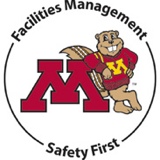Information
-
University of Minnesota
-
UConstruction Safety Inspection
-
Conducted on
-
Location
-
Prepared by
-
Personnel
Personal Protective Equipment (PPE)
-
PPE: Eye protection, hard hats, gloves, high-visibility clothing/vests, hearing protection used as required.
Worksite and Traffic Control
-
Adequate physical barriers, signage, warning tape, bollards, spotters? Housekeeping acceptable? Sufficient lighting and noise levels or controls
Ladders
-
Positioned safely and properly secured? In good condition and suitable for the job?
Working at Heights
-
Fall exposures of 6 feet or higher have adequate edge protection with railings or warning lines, or personal fall protection is employed. Aerial lifts or scaffolding set up and used properly.
Confined Spaces
-
Procedures properly implemented (entry permit, air monitoring, ventilation, LOTO, retrieval equipment, trained entrant and standby personnel, etc)?
Lockout/Tagout and Machine Hazards
-
Are machine guards in place? Is LOTO utilized properly?
Tools & Equipment
-
In good condition, including no missing or damaged guards, power cords in good condition, ground prongs not missing, etc). Correct equipment is used for the job.
Electrical Hazards
-
GFCI protection used. Extension cords in good shape, protected from damage, and not used permanently. Circuits not overloaded, electrical equipment not near water, no exposed live wiring, etc. Minimum 10-foot distance maintained from overhead power lines.
Hot Work
-
Was a Hot Work Permit completed and protective measures employed?
Hoisting Equipment
-
Loads not lifted over persons, not in close proximity to obstacles, and 10-feet minimum distance from overhead power lines. Lifting equipment, including ropes, slings, chains, hooks, appears in good condition. Safe Working Loads are not exceeded. Inspections performed.
Environmental & Health Hazards
-
Are chemicals, including fuel, stored and transported safely? Health hazards controlled? Adequate dust suppression? Adequate systems to prevent contamination of storm water drains?
Other Comments, Notes or Sketches:
-
Notes:
-
Sketches:








